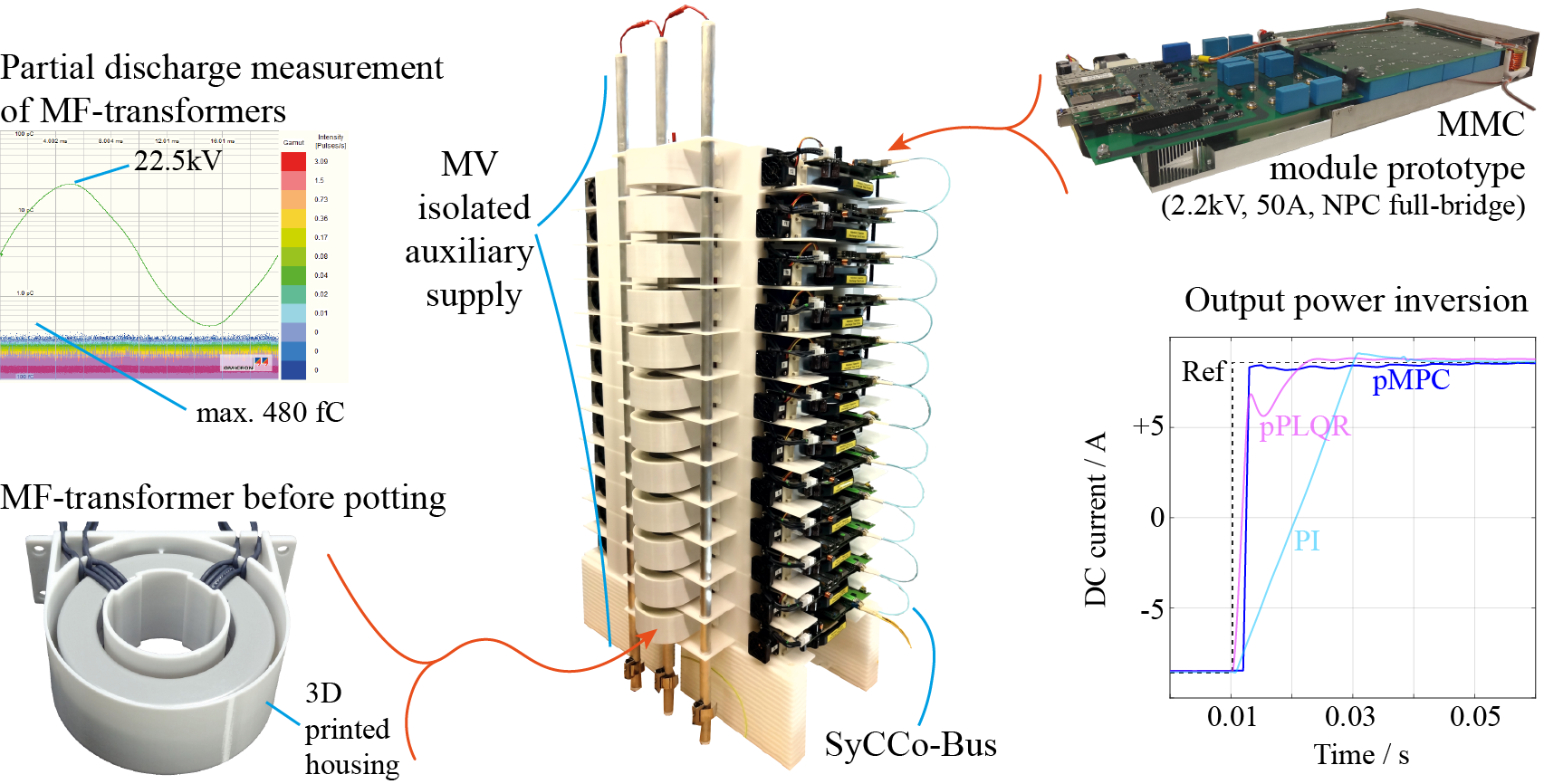High Performance Control of MMC based Active Rectifiers
The objective of this research project is the implementation of an MMC based active rectifier for the generation of test voltages in the medium voltage laboratory of the Laboratory for High Power Electronic Systems (HPE). The rectifier will be fed by the 9 kV AC grid and deliver up to 250 kW or 30 A (DC) in a DC voltage range from zero to 35 kV. It will be realized with 90 modules (15 per MMC arm) operating at a maximum module voltage of 2.2 kV.

To ensure the best possible output voltage/current control with the given MMC specs resulting from space restrictions, a high performance control system is required. Different modulator based model predictive control schemes are proposed and compared to state of the art solutions (e.g. cascaded PI control).
The novel control schemes are also evaluated with respect to the trade-off between implementation effort, control performance and savings in the minimum required module capacitance value.
In addition, a novel high precision PWM modulator considering the dynamic voltage change in the module capacitors as well as the semiconductor voltage drop is proposed, developed and tested.
For the implementation of the controller, custom control hardware is developed around an Intel Cyclone V SoC that serves as a central computation device for closed loop control, modulation and communication.
The prototype MMC utilizes the SyCCo-Bus (in house developed, high-speed, daisy chained converter control bus) and a special MV isolated auxiliary supply.